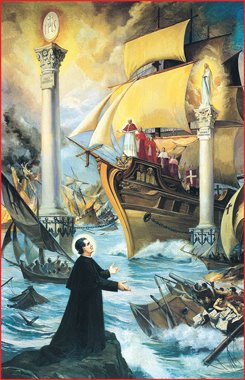
Fr Augustine Hayden OFM Cap
Fr Augustine Hayden OFM Cap (1870–1954), Capuchin priest, nationalist and Irish language advocate, was born John Hayden in November 1870, to William Hayden and Mary Hayden (née Morrisey) in Gowran, Kilkenny, and grew up in Blarney, Co. Cork, where his father was appointed railway station master.
In December 1884, he was one of the first pupils admitted to the newly opened Seraphic College at Kilkenny, a school with a Franciscan ethos that aimed to foster vocations amongst its pupils (two years later it moved to Rochestown, Co. Cork, by then the location of the Capuchin novitiate). Hayden entered the Capuchin order, taking the name Augustine, in November 1885 at a pivotal time in the history of the Capuchins in Ireland. After years of decline, the Irish province of the Capuchins was re-establishment in 1885 and forged strong links with the emerging national movement and Gaelic revival. The college at Rochestown was at the centre of this.
Fr Augustine was ordained in November 1893 at the Church of St. Augustine and St. John on Thomas Street in Dublin and went to live in a Capuchin community in Germany for two years. When he returned to Ireland, he joined the community based at Church Street, Dublin, which was the major centre for the Capuchins in the city. He was appointed rector of Rochestown College in 1898, a position he held until 1907. During his time there he put considerable effort into his work on preserving the Irish language. He was also involved in Conradh na Gaeilge and served as the president of its Cork branch for a number of years.
Fr Augustine returned to Dublin to serve as the ‘Guardian’ of the Church Street Capuchin Community from 1913–16. During the Easter rising of 1916, he assisted Cumann na mBan in setting up and running a first aid station at Fr Mathew Hall to treat those wounded in nearby fighting. As the gun battle around them intensified, Fr Augustine went to the British lines to make a case for protecting the station and managed to negotiate a ceasefire to allow for their seriously injured patients to be removed to the nearby Richmond Hospital, and to allow others to leave the besieged building. Along with his fellow Capuchin priests, he also visited the Four Courts to minister to the Volunteers there, at great personal risk. In his later recollection of the events of the rebellion for his official witness statement, Fr Augustine spoke reverentially of the Volunteers he ministered to, including a young man of ‘twenty-nine summers’ he anointed at the Four Courts, who would die a ‘grand catholic death in the Richmond Hospital kissing his crucifix and murmuring ejaculatory prayers’
On Sunday 30 th April 1916, Fr Augustine and Fr Aloysius Travers visited Padraig Pearse at Arbour Hill prison and James Connolly at Dublin Castle to verify the legitimacy of the surrender order they had issued the day before. The priests then acted as go-betweens taking messages between the British army leadership at Dublin Castle and Thomas MacDonagh and John MacBride, who were still holding out at Jacob’s biscuit factory. Hayden and Travers organised and attended the meeting between MacDonagh and General William Lowe at St Patrick’s Park which ultimately resulted in the surrender of positions at Jacob’s, the South Dublin Union and Marrowbone Lane. Fr Augustine and his Capuchin confrères visited the captured Volunteers at Richmond barracks and Kilmainham Jail, consoling them, hearing confessions and bringing messages to and from their families. When the executions of the rebel leaders started the following week, they ministered to the condemned men. Fr Augustine was with William Pearse, John MacBride, Eamonn Ceannt and Con Colbert in their last moments at Kilmainham Jail
Fr Augustine was celebrated for his talents as a missionary and lecturer, and throughout his career he delivered retreats at centres across the country. He was a prolific writer, and penned a number of devotional texts including St Francis and the Blessed Eucharist (1932), Ireland’s Loyalty to the Mass (1933) and Ireland’s Loyalty to Mary (1952). He also wrote on Blessed Edmund Ignatius Rice, the founder of the Irish Christian Brothers and Fr Theobald Mathew OFM Cap the renowned temperance crusader. Fr Augustine Hayden died on 7th February 1954 at the Bon Secours Home, Cork and he is buried at the Capuchin Cemetery at Rochestown.

Irish Remnant Publications
We are a few Irish people who are part of the present day “remnant” who burn brightly with the same faith as our forefathers. We believe that these books are precious heirlooms to be passed onto the present generation to preserve authentic Irish Catholicism. The books signify the two pillars of Catholicism as represented by St John Bosco’s famous dream, the Eucharist and Mary.